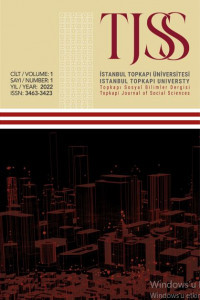A POLITICAL ECONOMY OF INADEQUATE HOUSING IN KENYA: A CASE OF MATHARE VALLEY, NAIROBI
vagrancy, unauthorized, unsanitary, squalor, agency, self-help, vagrancy, unauthorized, unsanitary, squalor, agency, self-help
A Political Economy of Inadequate Housing in Kenya; A Case of Mathare Valley, Nairobi.
unauthorized, unsanitary, squalor, agency, self-help,
___
- Republic of Kenya (2019). Population and Housing Census. KNBS.
- Rodriguez-Torres, D. (2010). Public authorities and urban upgrading policies in Eastlands: the example of ‘Mathare 4A Slum Upgrading Project in Charton-Bigot and D Rodriguez-Torres, Nairobi Today: The Paradox of a Fragmented City. (61-94). IFRA.
- Thieme, T. (2016). The ghetto will always be my living room.Hustling and belonging in the Nairobi slums.
- Tiwari, R. (1981). The origin, growth, and functional structures of Nairobi's Central Business District (CBD). in Obudho, R. (Ed.), Urbanization and development planning in Kenya. Kenya Literature Bureau.
- Werlin, H. (1966). The Nairobi City Council: A Study in Comparative Local Government, Comparative Studies in Society and History, Cambridge University Press.
- White, L. (1990). The Comforts of Home: Prostitution in Colonial Nairobi. University of Chicago Press.
- ISSN: 2822-3853
- Başlangıç: 2022
- Yayıncı: İstanbul Topkapı Üniversitesi
Gösterişe Yönelik Tüketim Kavramının İncelenmesi
A POLITICAL ECONOMY OF INADEQUATE HOUSING IN KENYA: A CASE OF MATHARE VALLEY, NAIROBI
Türkiye’de Artan Konut İhtiyacı ve Konut Sorununun Dinamikleri
Simge KUTSAL, Çiğdem POLATOĞLU
Bong Joon Ho’nun Parazit Filminde Kent Yoksulluğu İmgeleri
Exploring Urban Poverty in Bangladesh: Dynamics, Coping Strategies and Beyond
Tuğba BAYDENİZ, Vesile KÜÇÜK, Hüseyin GÖKAL
Finding Neverland: Homelessness and Despair in the Urban Space
Almanya ve Türkiye'de Yaşayan Evsizlerin Kültürel Deneyimleri
Helin Hazal ÇAKMAK, Gökhan GÖKGÖZ
Poverty and Local Equality Plans: An Analysis of İstanbul, İzmir, and Ankara
Itır BAGDADİ, Işıl KELLEVEZİR, Huriye TOKER
Türk Hukukunda yoksulluğa karşı nafaka yükümlülükleri, uygulama sorunları ve çözüm önerileri
